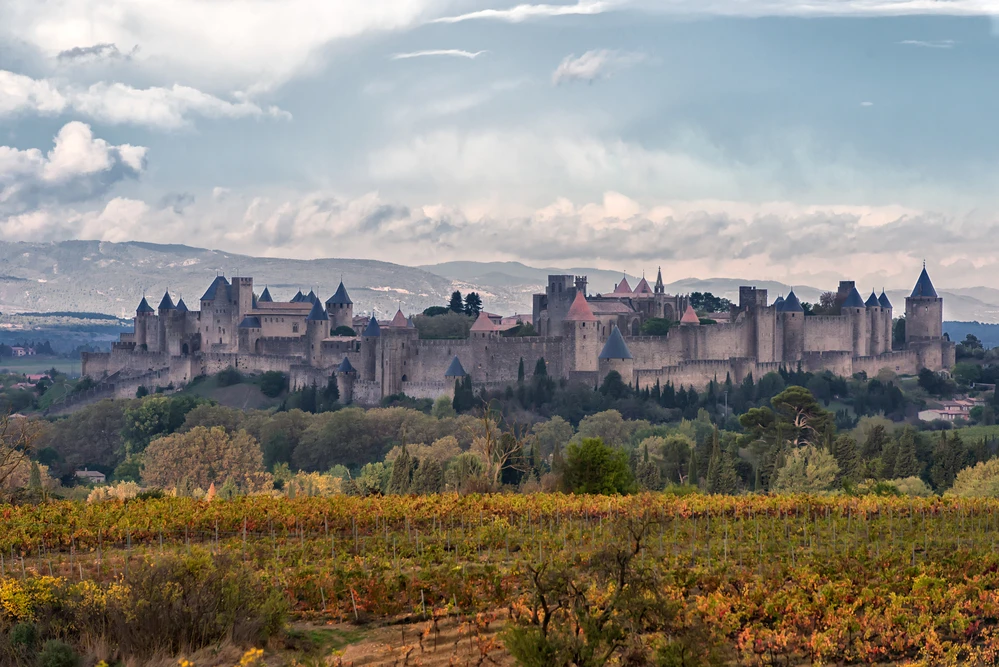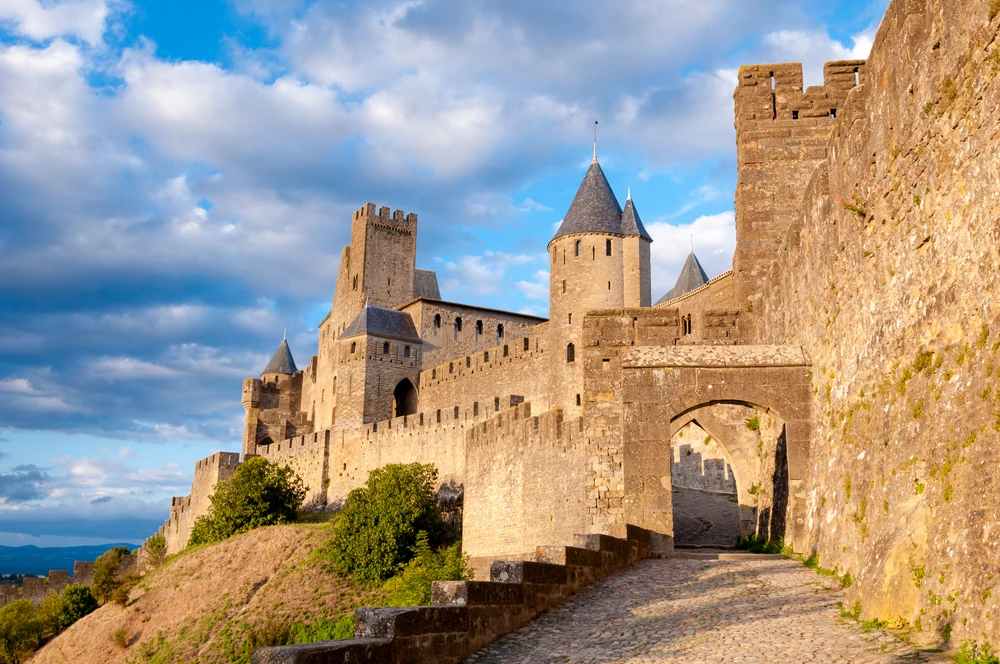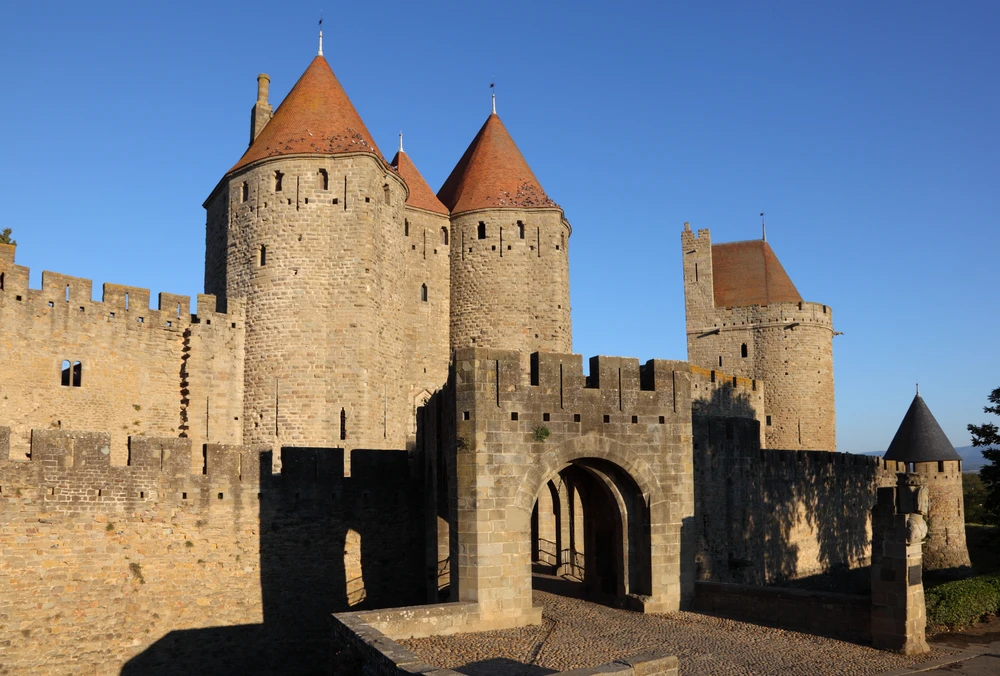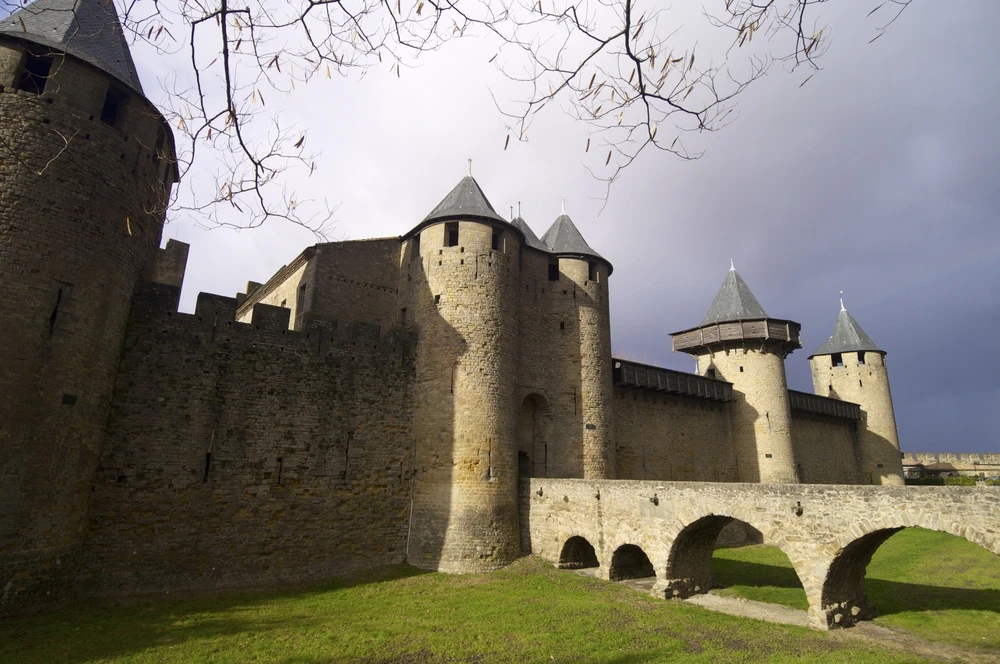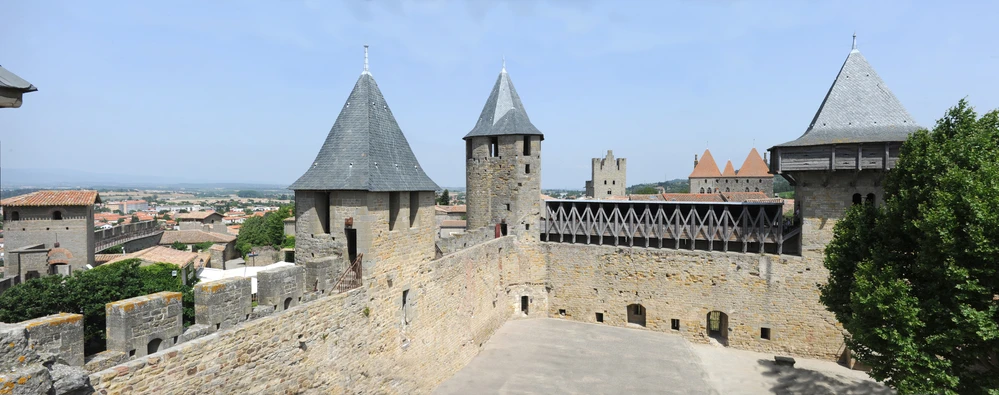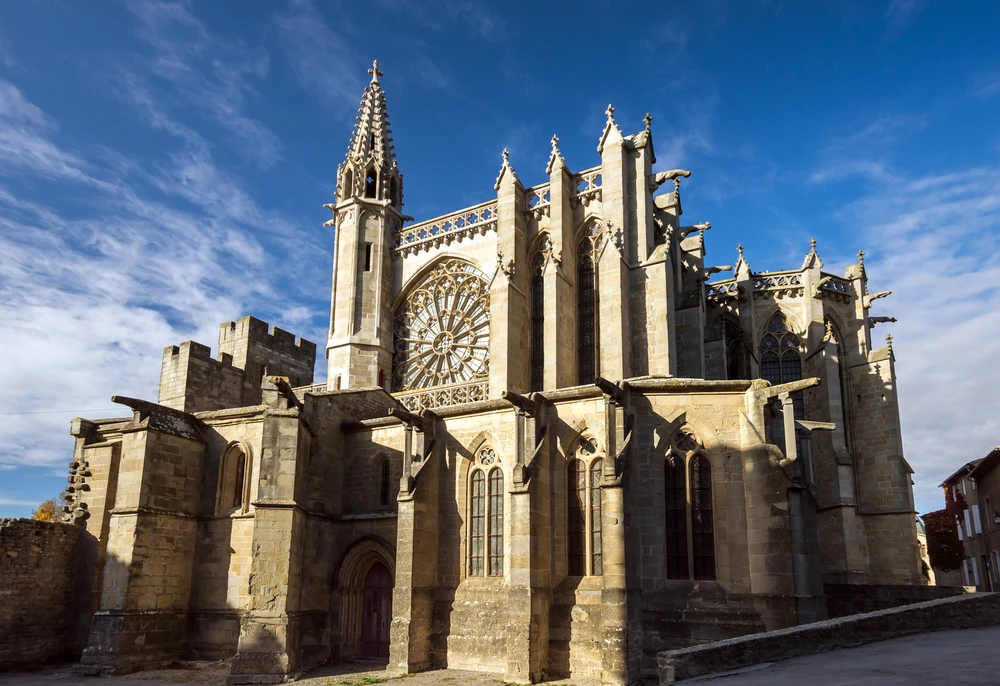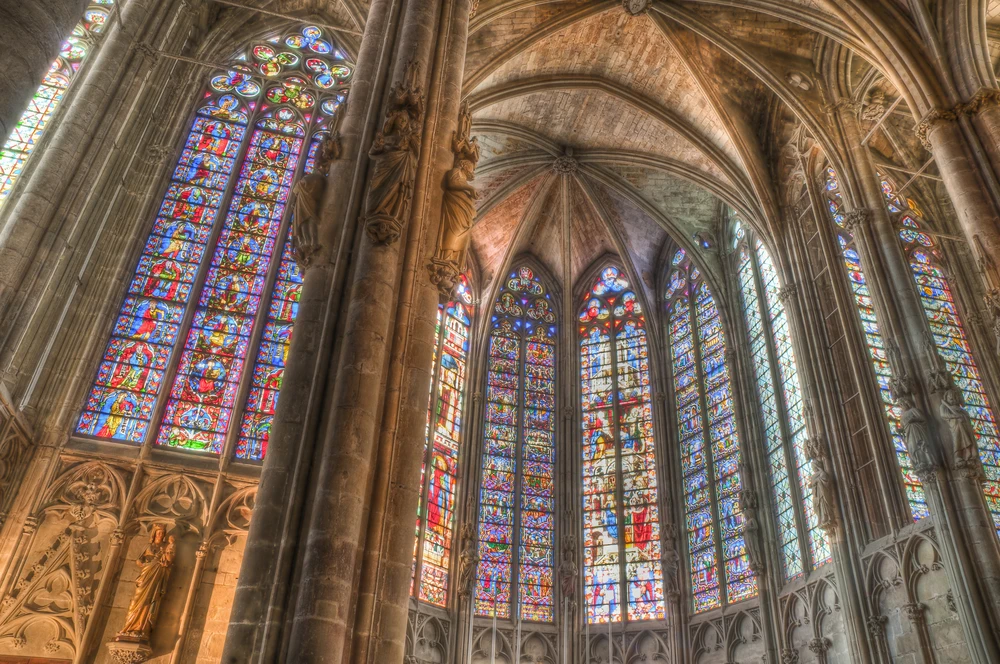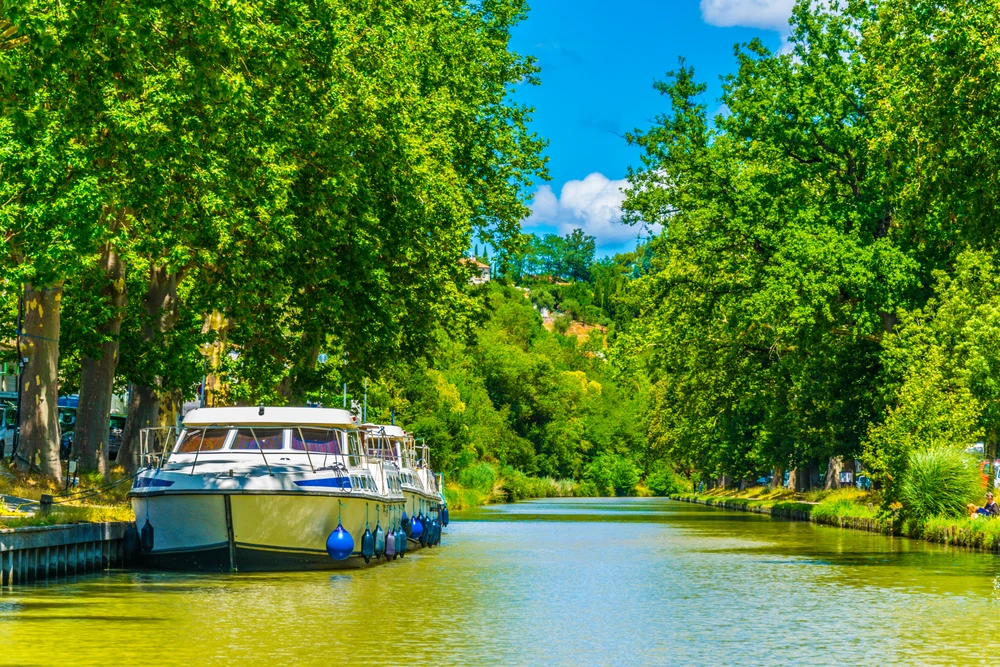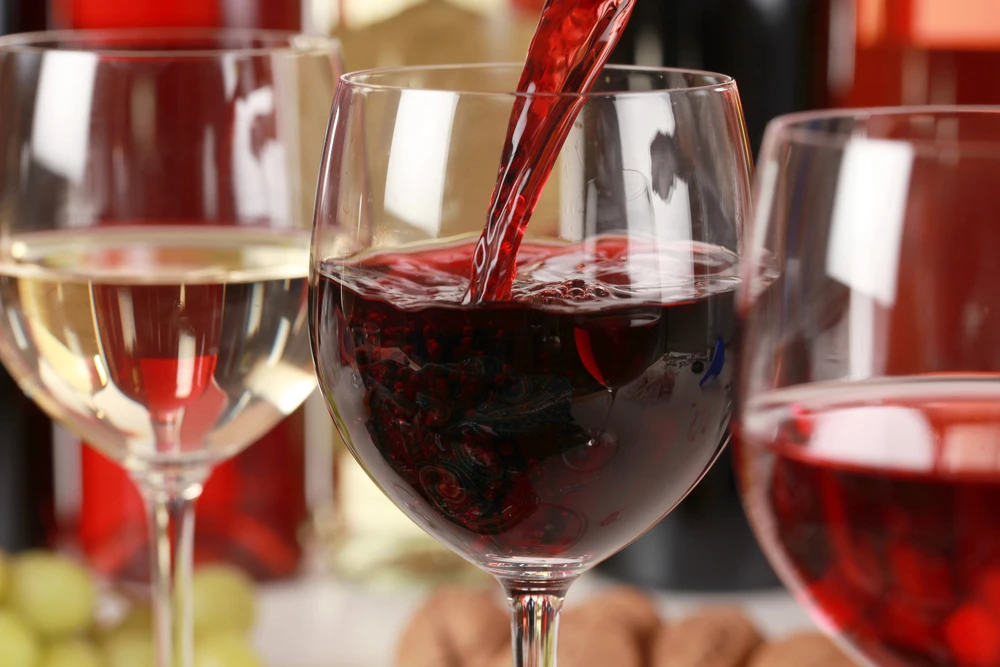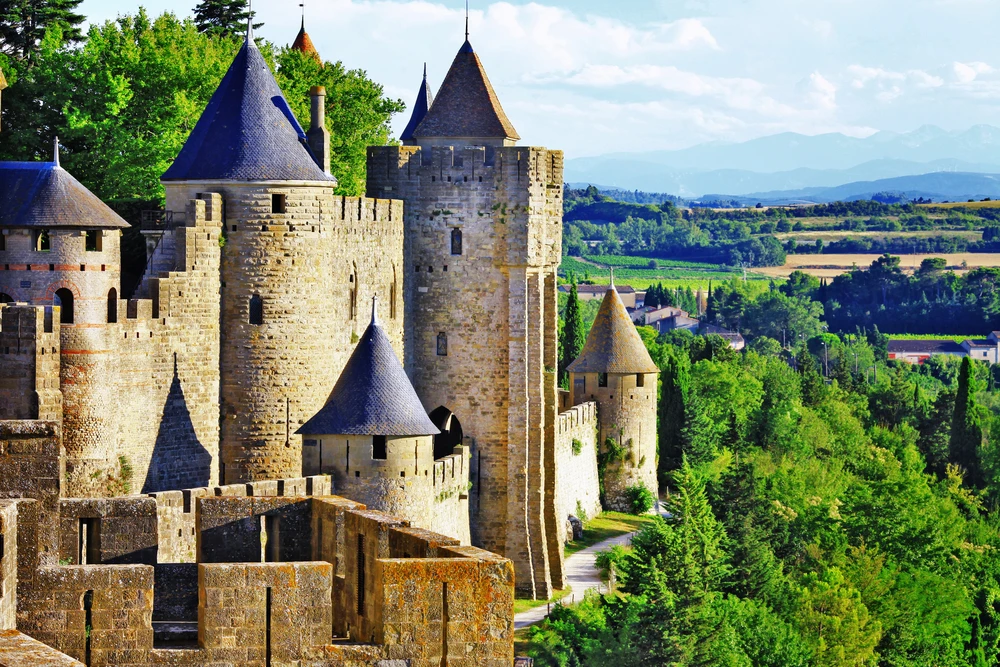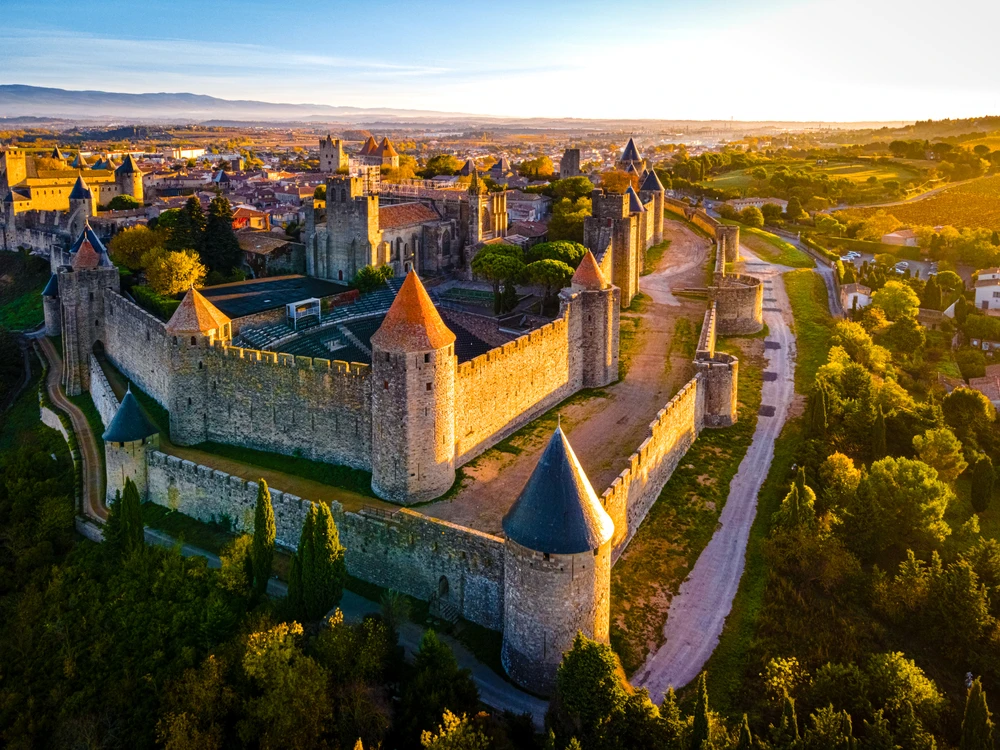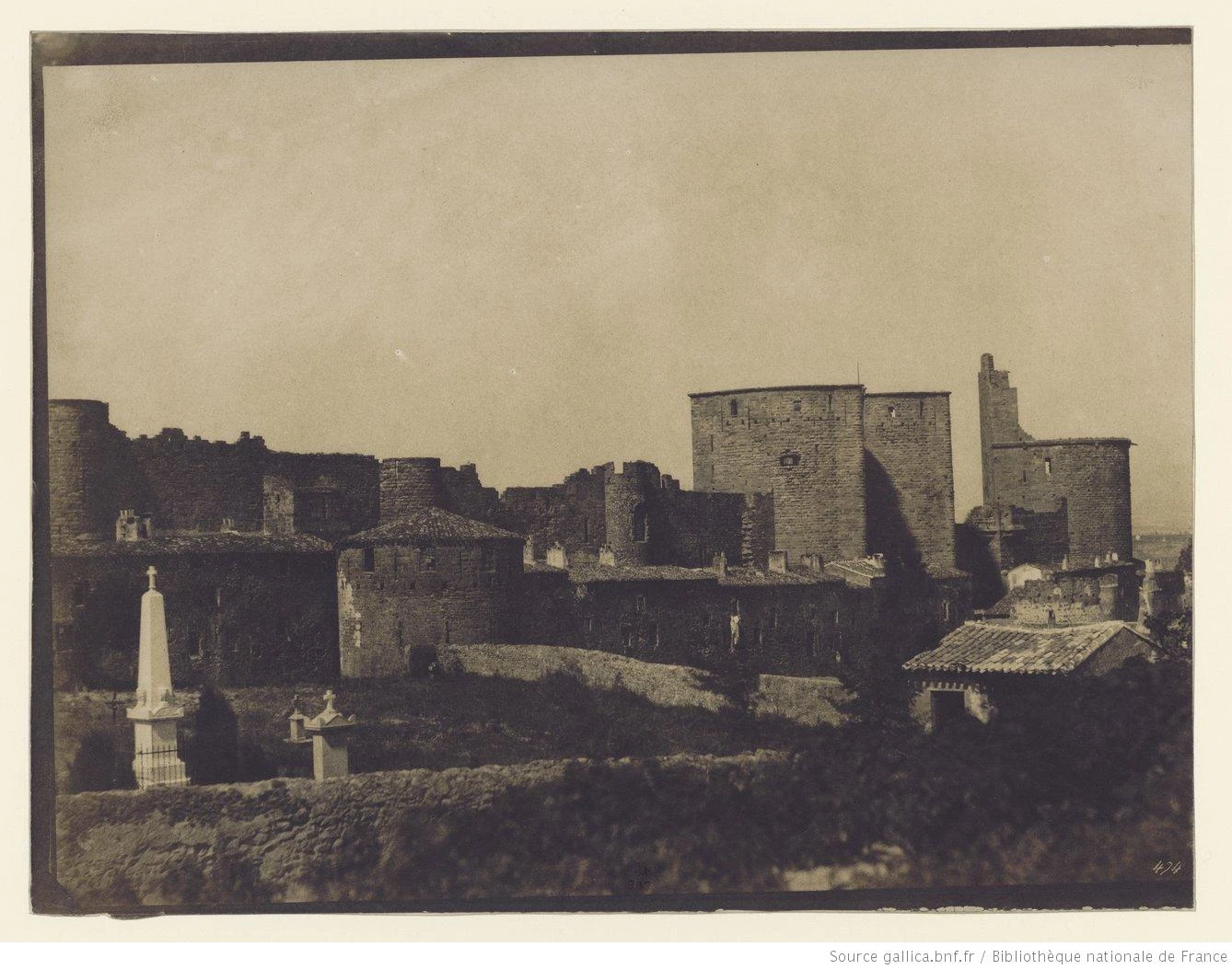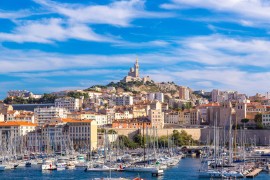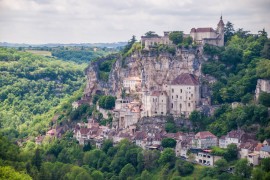There may be translation errors. Our translator went ahead to visit the towers of the Carcassonne ramparts, and we never saw him again... Perhaps he fell into a medieval prison?
Visit Carcassonne in 6 stages
The upper town of Carcassonne. Photo chosen by monsieurdefrance.com: via depositphotos.
A few words before we get started.
La Porte d'Aude. Photo chosen by monsieurdefrance.com: PabloDebat via depositphotos.
Carcassonne is the prefecture of the Aude department. It is home to just over 45,000 Carcassonnais. The medieval town has been a UNESCO world heritage site since 1997. With free access, it attracts over 4,000,000 visitors a year , making it France's 2nd most visited tourist site outside Paris, after Mont Saint Michel. It owes its fame to the work of Eugène Viollet-Leduc (1814-1879), the famous architect who not only safeguarded the site, but recreated it with his own imagination, as he asserted : "Restoring an edifice does not mean maintaining it, repairing it or remaking it, it means re-establishing it in a complete state that may never have existed at a given moment" .
1 The medieval city of Carcassonne
La Porte Narbonnaise. Photo chosen by monsieurdefrance.com: PabloDebat via depositphotos.
You've got to admit it's an incredible city, perched on its eminence, with two walls (totaling over 3 km) and 52 towers . Take the time to walk around the walls before entering the town through the Porte Narbonnaise (because it led to the Narbonne road), which is not too far from Rue Gustave Nadaud (for your GPS). The space between the two lines of ramparts is called the Lices. In days gone by, knights' tournaments were held here. Nowadays, events are held here, especially in fine weather. Opposite the Porte narbonnaise is the Porte d'Aude. In the heart of the town, you'll find the castle, cathedral and many old houses.
Take the time to wander through the narrow streets and along the ramparts... That's the charm of Carcassonne. Here: Place Auguste PIERRE PONT. Photo chosen by monsieurdefrance.com: Weisdergeier via depositphotos.com
The town is full of little streets and squares, where you'll need to get lost for a while to get some great photos. You won't want to miss rue Cros-Mayrevielle with its boutiques , and you'll continue on to discover other arteries, large and small, including place Auguste Pierre Pont with the Hôtel de la Cité, and rue Saint Nazaire for a superb photo of the château...
The view from rue Saint Nazaire. Photo chosen by Monsieurdefrance.com: Pablo Debat / via dépositphotos.
Among the many streets to discover, note the Rue du Plo (where you'll find the medieval camp, open every day during the vacations, otherwise on Wednesdays, Saturdays and Sundays), Place du Petit puits, Place Marcou (to find a restaurant or terrace) as well as the Ruelle Saint Sernin, Rue du Tréseau (near the tower of the same name), Place du Grand puits or Place Saint Jean. The best way is to leave via the Porte d'Aude, where you'll discover the whole of the lower town and the Bastide.
2 Carcassonne castle
The entrance to the Chateau Comtal in Carcassonne. Photo chosen by monsieurdefrance.com: pedro2009 via depositphotos
This is the heart of the medieval city and the home of the Viscounts of Trencavel since 1067. Work began in 1130, at the behest of Bernard Aton IV de TRENCAVEL, but a fortress already existed, as part of the ramparts were added on top of Gallo-Roman ramparts, and the bases of some of the towers date back to Visigothic times. All periods of history are present in Carcassonne, as excavations in the 19th century uncovered the mosaic floor of a Roman villa in the Pinte tower. Speaking of towers, there are 9 here in all, surrounding what, over time, has become a fortress facing outwards, but also facing the city, whose kings of France have had a hard time getting the upper hand.
The inner courtyard of the Chateau Comtal in Carcassonne. Photo chosen by monsieurdefrance.com: Fotember via depositphotos
Practical information about Carcassonne castle
Opening hours
April1 to September 30 , 10 a.m. to 6:15 p.m.
Last entrance to château: 5pm and last entrance to ramparts: 5:45pm
October1 to March 31 , 9:30 a.m. to 4:45 p.m.
Last entrance to château: 3:45 pm and last entrance to ramparts: 4:15 pm
Closed on January1, May1 and December 25
Rates :
9.50 full price (in 2023). All prices are on the official website here.
3 Saint Nazaire Basilica
Located in the city center, it was for a long time the city's cathedral, before the church of Saint Michel was finally chosen in the 19th century. It has to be said that, far from being appreciated, the old town began to lose its inhabitants in the 18th century to the Bastide. It became a center of interest again with the work of Viollet le Duc. Its architecture is a harmonious blend of Romanesque and Gothic styles, and is renowned for boasting some of the finest stained glass in the South of France.
The magnificent stained glass windows of the Basilica of Saint Nazaire in Carcassonne. Image chosen by monsieurdefrance.com: anibaltrejo via depositphotos.com
4 Carcassonne museums
I'm listing them here, not because I prefer them to the rest of the ranking, but because they're in the medieval city. There's the Château Comtal museum, of course, but also the Musée de l'Ecole: a 5-room museum dedicated entirely to the history of schooling in France from 1880 to 1960. It is located on rue du Pio. It's closed on Sundays and Mondays, and admission costs 4 euros full price (2023). For full details, click here. There's also the creepy Inquisition Museum, which tells the story of the evolution of torture instruments. It's open every day, and entrance costs 11 euros full price (2023), which is quite expensive for the visit. For more information, click here. Finally, there's a haunted house, and it's really scary... It's open every day and entrance costs 10 euros (2023). For more information, click here.
5 outside the walls: the old bridge, the Bastide Saint Louis, the Cathedral
The lower part of Carcassonne is well worth a visit. Here you'll find the cathedral of Saint Michel, the Neptune fountain on Place Carnot, the church of Saint Vincent and its astonishing bell tower, and the port overlooking the Canal du Midi.
6 the canal du midi.
The banks of the Canal du Midi not far from Carcassonne. Photo chosen by Monsieurdefrance.com: dudlajzov via depositphotos.
278 kilometers long, it links Toulouse to the Mediterranean. It is France's largest 17th-century engineering structure. Long a trade route, it is now dedicated to river tourism. In Carcassonne, you can see the Pont Marengo lock.
What's for dinner in Carcassonne?
The wines
We're already drinking. The town is surrounded by vineyards. The wines of the Cité de Carcasonne are I.G.P (Indication Géographique Protégée). We're also in the Limoux terroir, where the famous blanquette de Limoux was studied by Dom Pérignon when he wanted to know how to master the bubbles of champagne. In fact, it's the oldest sparkling wine in the world to be made here, since the process was discovered by the monks of Saint Hilaire Abbey in 1544. Also worth tasting are A.O.C Cabardès and Corbières (A.O.C: Appelation d'Origine Controlée). Alcohol abuse is dangerous for your health. Drink in moderation.
Cassoulet from Carcassonne:
The "god of Occitan cuisine" according to Prosper Montagné, the great specialist, cassoulet is "the poor man's dish" in the south of France, and each town has added its own personal touch. There are three great cassoulets: Castelnaudary, Toulouse and Carcassonne. Carcassonne's is made with beans, of course, pork rind, goose confit, Toulouse sausage and partridge.
Olives, truffles, snails
You can also try Lucques olives (not bad for an aperitif), dry liver sausage and escargots à la languedocienne (garlic, anchovies and cured ham with Provence herbs). There's also a black truffle market.
A little history:
Carcassonne today. Photo chosen by monsieurdefrance.Com: maugli via depositphotos.
Carcassonne: a very old site
The earliest mention of Carcassonne comes from Pliny the Elder (1st Century AD). He speaks of "carcasum". It was first an oppidum, then a Roman town on the road from Bordeaux to Narbonne. It was fortified for the first time in the 3rd century, with 1 km of ramparts (some of which served as the basis for the medieval ramparts) and over 30 towers. Taken by the Visigoths in the 5th century, it was regularly attacked by the Franks. The town was conquered by the Muslims in 725 (and became qarqshuna). The inhabitants were obliged to give half their possessions to the new masters of the city, which was conquered in 759 by Pepin the Short. By the end of the 12th century, Catharism was gaining a strong following in Carcassonne. They were protected by Viscount Raimond Roger TRENCAVEL (1185-1209), and the town was besieged during the Albigensian Crusade. Thirst drove the town to capitulate. Out of distrust for the inhabitants, the kings of France transformed the castle into a defensive fortress, both inward and outward. In 1234, the Inquisition set up shop in the town to deal with the Cathars. Having become a fortress, the upper town saw the expulsion of its inhabitants, who founded the lower town around the bastide Saint Louis. It was this part of the town that was to flourish economically, notably thanks to the textile industry. It was also an important fortress for the kings of France against the kings of Spain. It was precisely the end of tensions between the two kingdoms in the 17th century that saw the fortified town lose interest and gradually fall into ruin.
The city as seen from Carcassonne. Photo chosen by monsieurdefrance.com: depositphotos.
The work of Viollet le Duc.
Jean Pierre CROS-MAYREVIEILLE is trying to save a city that has been severely damaged by time and redeveloped (the lices contained 112 houses in 1820). He fell in love with Eugène VIOLLET LE DUC, who literally rebuilt the medieval town, paying little attention to archaeology. His work is sometimes controversial, but it gave the upper town of Carcassonne its current appearance. Today, it's one of France's top tourist attractions.
Carcassonne before the works of Violet le Duc. Photo chosen by monsieurdefrance.com: By Gustave Le Gray - Gallica / BNF.
The legend of Dame Carcas
It is said that Carcassonne takes its name from Dame Carcas. The wife of Ballak, the town's Muslim leader, she is said to have confronted Charlemagne. When her husband was killed, she took charge of the city's defense, repelling the onslaught of Charlemagne's armies. Cleverly, she set up fake soldiers made of straw to make it look as if the town was filled with men. She also had a pig fed wheat and thrown off the ramparts to make it look as if the city had plenty of reserves. The siege lasted 5 years. Charlemagne then decided to lift the siege, and to celebrate, Dame Carcas rang all the city's bells, prompting Charlemagne's reflexion that gave rise to the city's name "Carcas sonne! She is depicted on the Porte Narbonnaise.
Geo / Web / Train / Parking info
Carcassonne is in the Aude department, Occitanie region. Zip code 11 000.
By car :
It is located 771 kms from Paris (7H30 by road), 93 kms from Toulouse (1H00), 152 kms from Montpellier (1H40) and 60 kms from Narbonne (1H00).
By train :
There's a train station at 1 avenue du Maréchal Joffre. The website is here.
The websites :
The official Carcassonne tourism website
Grand Carcassonne tourism website.
Parking in Carcassonne
- P0, Porte Narbonnaise GPS address: Chem. de Montlegun, 11000 Carcassonne up to 2am, 1€ for 15 min & up to 12am, 0.50€ for 45min.(Fixed rate of 3€ per night between 8pm and 8am.
- P1, Porte Narbonnaise: GPS address: Chemin de Montlegun (with shuttles in summer). up to 2h, 1€ for 15 min & up to 12h, 0.50€ for 45min.(Free at night between 20h and 8h)
- P2, Porte d'Aude : GPS address Camin del orts : until 2am, 1€ for 15 min & until 12am, 0.50€ for 45min.(Free at night between 8pm and 8am.
Attention lost ticket; 30 euros.
There are also parking lots outside the city walls.

